Actually, the old town of Córdoba is one big sight where you can spend the whole day wandering around. There is something to discover on almost every corner.
A stroll through the narrow streets of Córdoba is simply beautiful. Especially if you walk a little away from the mosque-cathedral, you can discover small squares with fountains or monuments. There is a church around almost every corner and a typical bar invites you to linger.
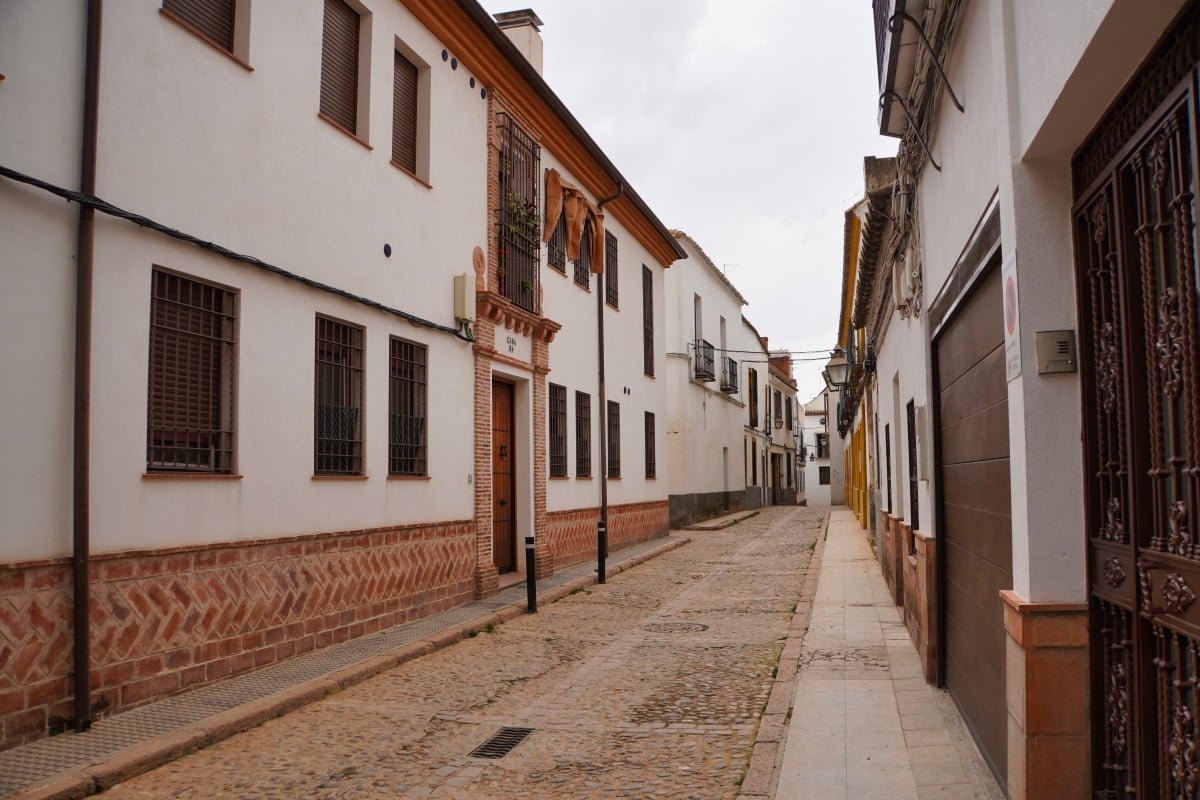
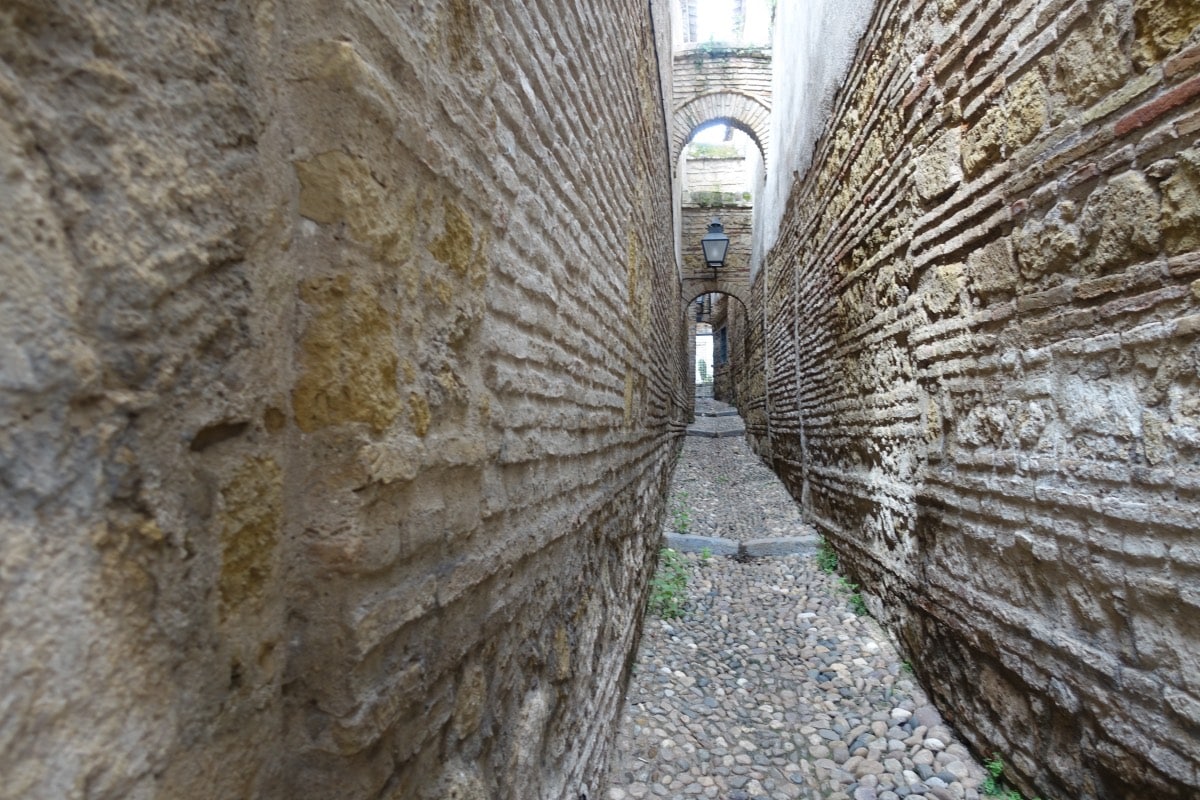
Discover the old town of Córdoba, look into the small courtyards with their typical flower pots on the walls, you can drift wonderfully and never walk a path twice.
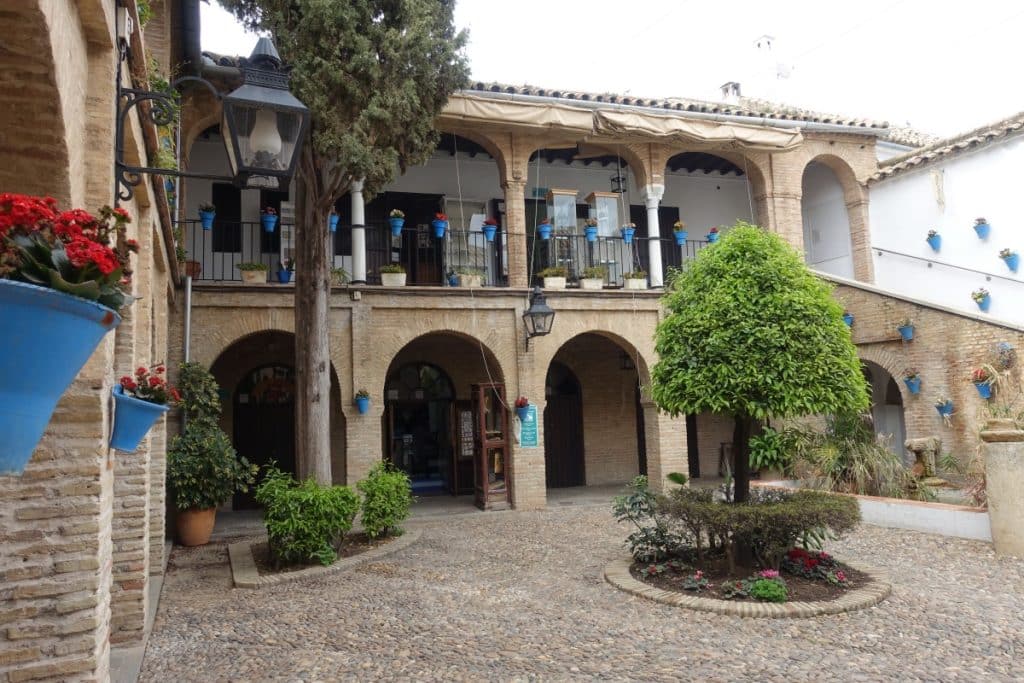
Church of Santa Marina in Córdoba
Near our holiday flat was the Iglesia de Santa Marina de Aguas Santas from the 13th century. It is one of the 12 churches that King Ferdinand el Santo had built in the city after the Reconquista.
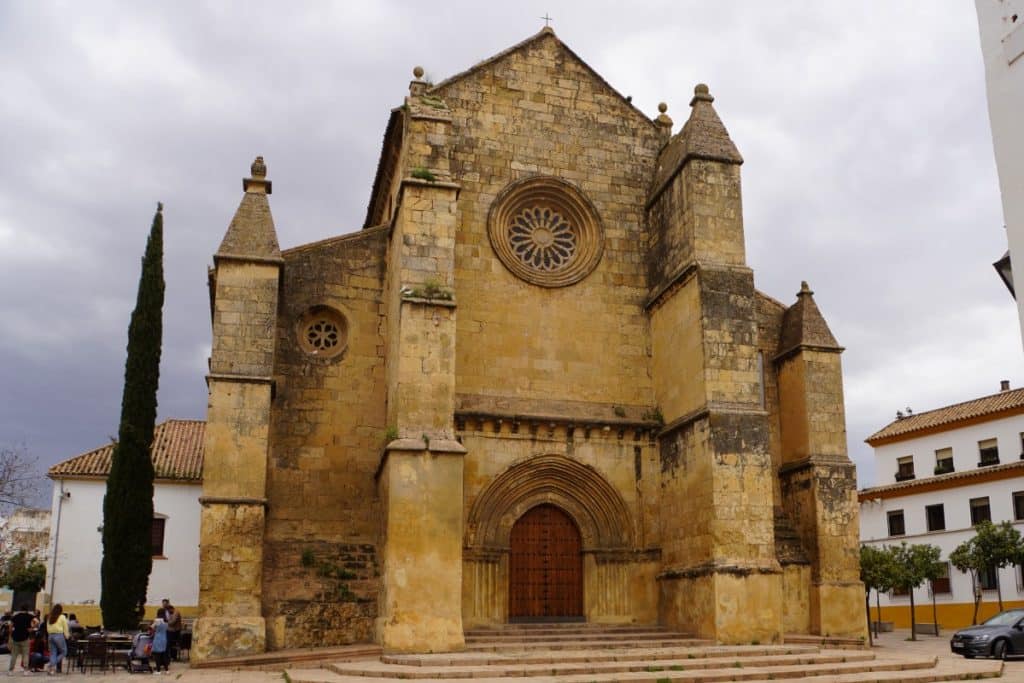
The sacred building shows Gothic and Romanesque elements. The earthquakes of 1680 and 1755 caused severe damage and a fire in 1880 completely destroyed the church. It was rebuilt in 1882. After restoration work in the 19th and 20th centuries, the medieval exterior of the church was restored.
Well-known sight: Roman Bridge of Córdoba
The 250-metre-long Puente Romano, the Roman Bridge of Córdoba, crosses the Guadalquivir River. It is one of the most famous sights of the city. When we were in the city in March, many visitors walked across the bridge. It reminded me a bit of the Charles Bridge in Prague, which is not very crowded at certain times of the day. In the high season, the Roman Bridge will certainly be similarly crowded. Here, too, artists sell their works, street musicians play and tourists look for the best photo spot.
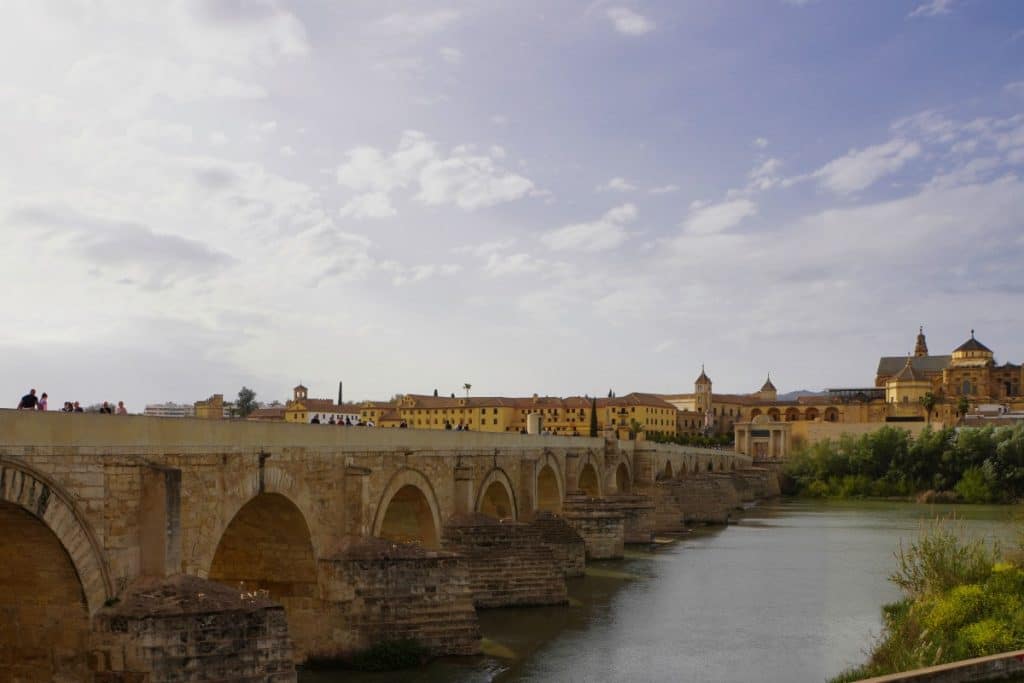
But the walk across the bridge is still worth it. The view of the old town is simply beautiful.
In 45 BC, the Romans built a bridge over the river after the Battle of Munda. It was part of the Via Augusta, an important trade route, and at that time already had 16 arches. In the 10th century, the Caliph of the time had the bridge renewed.
After the Reconquista, the structure was renovated several times. In the 17th century, a statue of the Archangel Raphael was erected in the middle of the bridge. He is the patron saint of Córdoba. Burning candles stand in front of the statue and many a city dweller pauses for a short prayer on his way across the bridge.
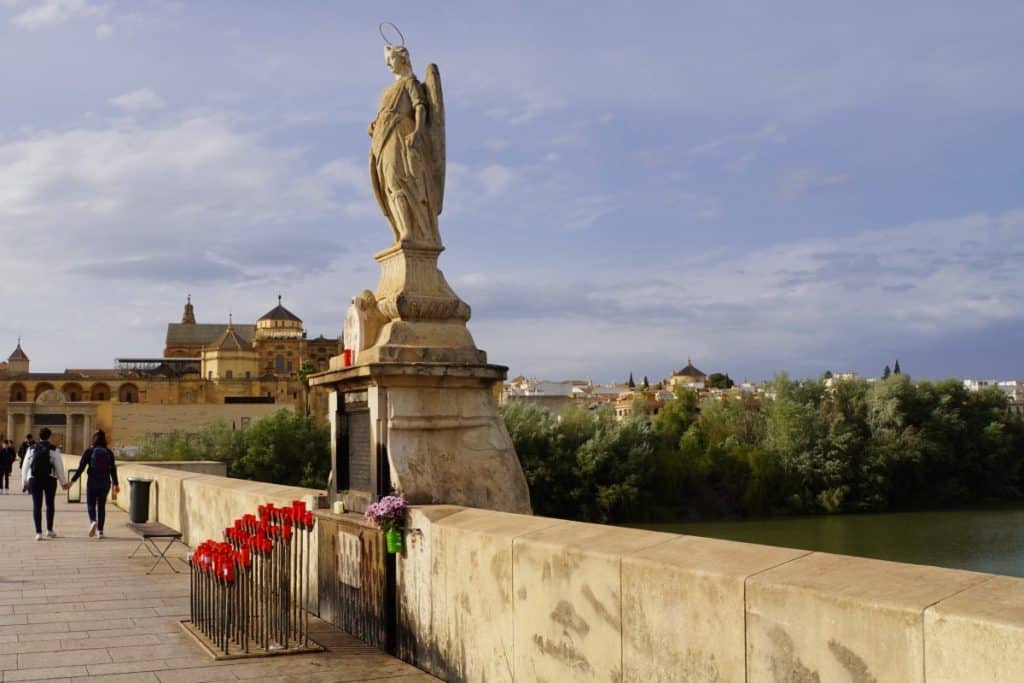
The Roman Bridge can also be seen in the film! Scenes played here in the series “Game of Thrones”, in which the bridge embodied the “Long Bridge of Volantis”.
Torre de la Calahorra
At the end of the bridge, on the side facing away from the old town, is the Torre de la Calahorra, which served as a watchtower in the Middle Ages. Today, the tower is one of the oldest remaining parts of the Cordoba fortifications.
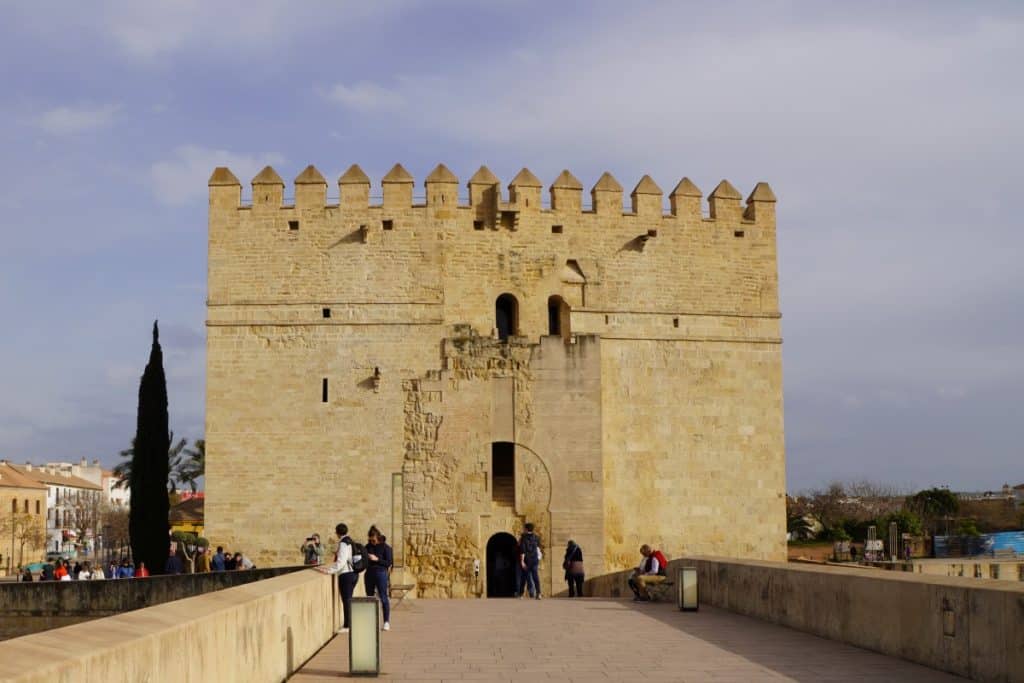
At the end of the 12th century, Enrique II de Trastámara (Henry II of Castile) built the fortress so that he could protect himself from his half-brother Pedro I el Cruel (Peter I of Castile, called the Cruel or the Just).
In the 18th century the Torre de la Calahorra housed a prison, and in the 19th century a school for girls. Today, the tower houses a museum that is well worth a visit.
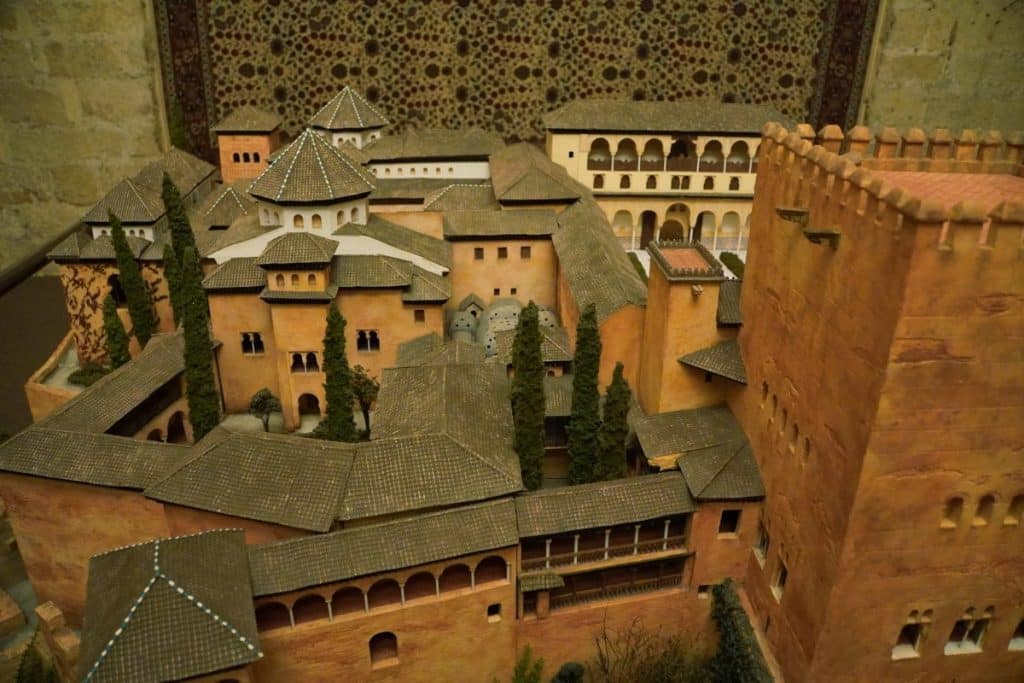
The museum has some interesting exhibits from Cordoba’s Islamic period. I was particularly impressed by the city models and the replica of the mosque-cathedral. If you look at this model at the right angle, you have the feeling that you are standing in the middle of the beautiful building.
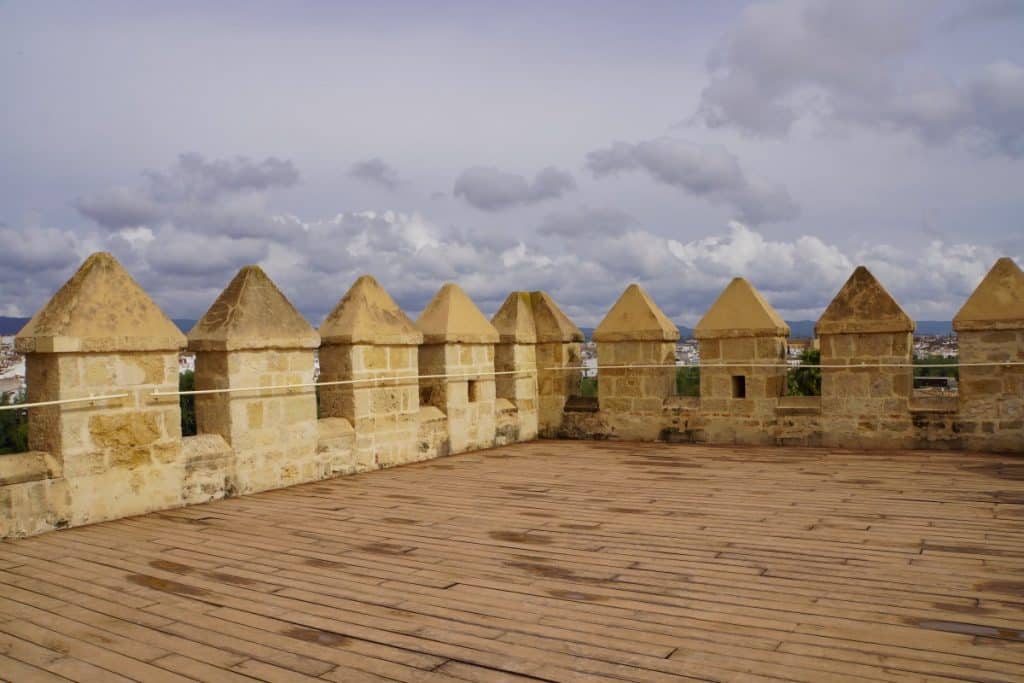
Don’t miss climbing the small narrow stairs to the viewing platform on the tower. From there you have a great view over the city and the amazingly crooked course of the bridge.
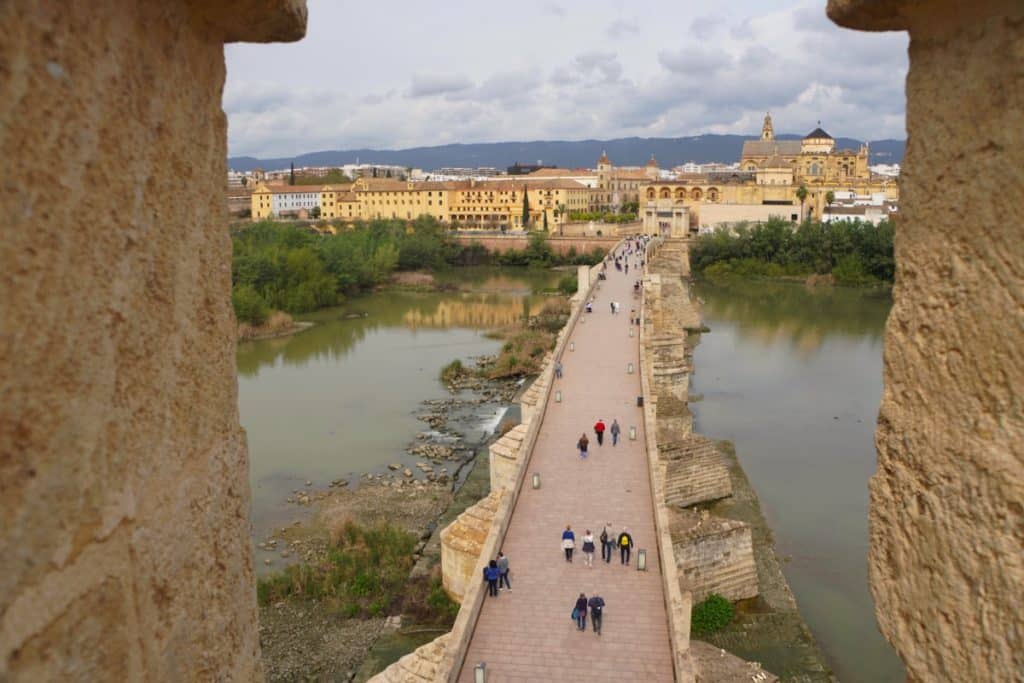
Puerta del Puente Triumphal Arch in Córdoba
At the end of the Roman Bridge, on the old town side, stands the Triumphal Arch of Cordoba. At the beginning of the 16th century, the Spanish King Philip II had it built in the Renaissance style. This was built in the Renaissance style. At that time, the arch was integrated into the city wall.
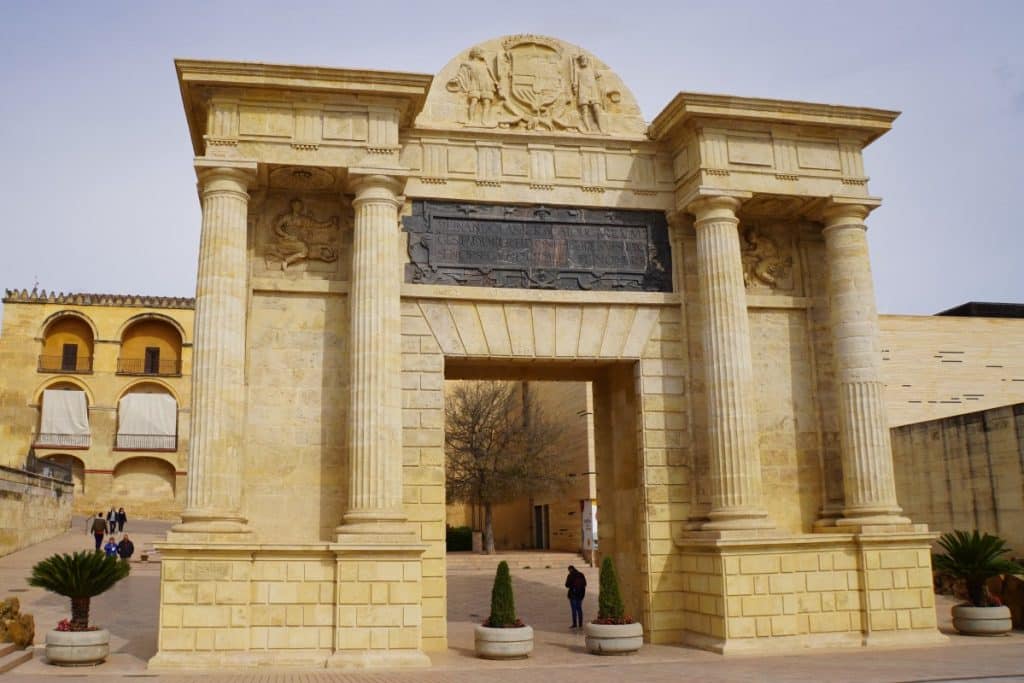
The Puerta del Puente is characterised by four Doric columns, which can be seen to the right and left of the passageway. A coat of arms with two warriors and a sculpted frieze complete the picture.
Triunfo de San Rafael de la Puerta del Puente
Right next to the triumphal arch is a tall stone column, the Triumphal Column of San Rafael. At the top of the column is the sculpture of the Archangel Rafael, who watches over the city from there.
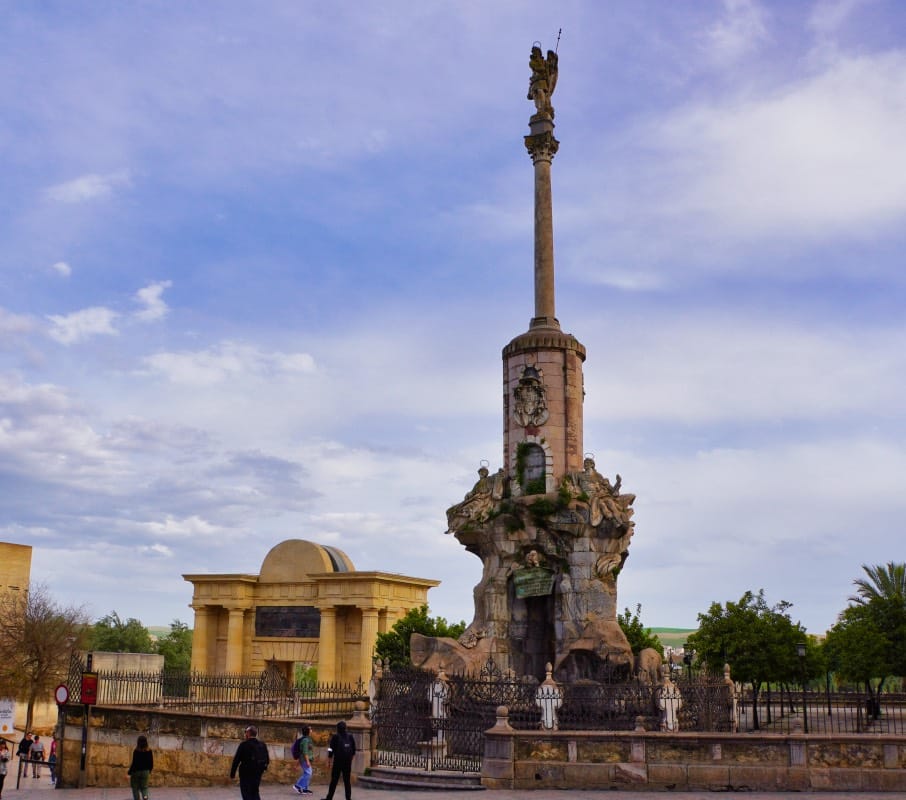
The column was erected after a wave of plague hit the town in the 17th century. The inhabitants of the town begged their patron saint to protect the town as best they could, and the plague supposedly disappeared shortly afterwards. The column was built in gratitude.
Old Town of Córdoba: Albolafia Water Mill
If you walk a little way along the Guadalquivir, you can discover the remains of a huge mill wheel. This comes from a Moorish mill and was used to pump the water of the river into the gardens of the Alcázar.
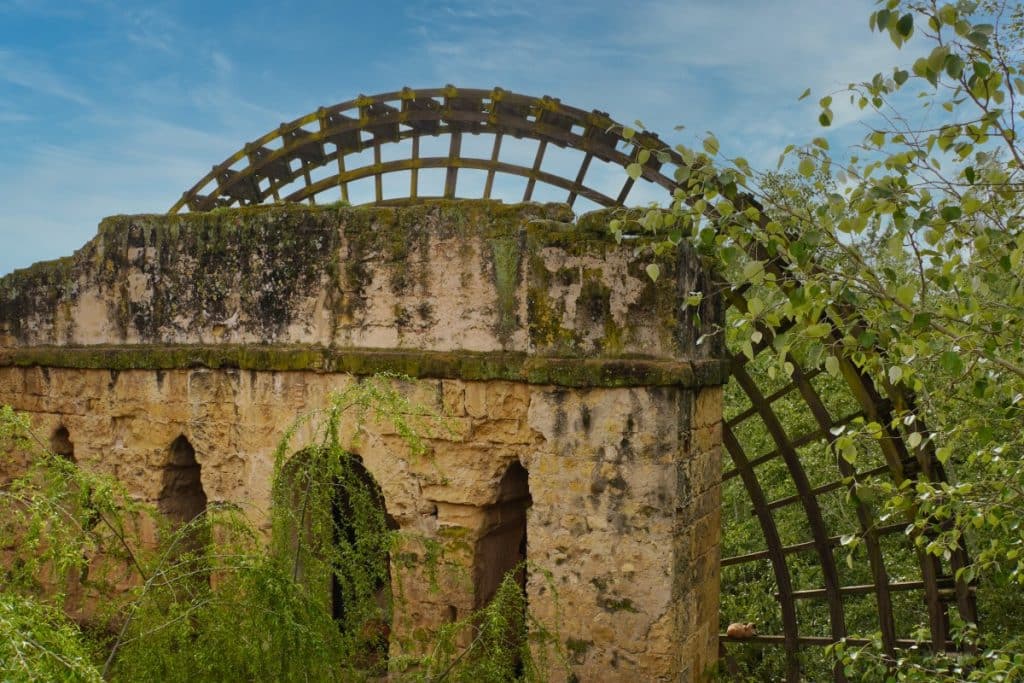
Roman Mausoleum (Mausoleo Romano)
Almost unnoticed in the Jardines de la Victoria park stands a cylindrical building that visually does not fit there at all.
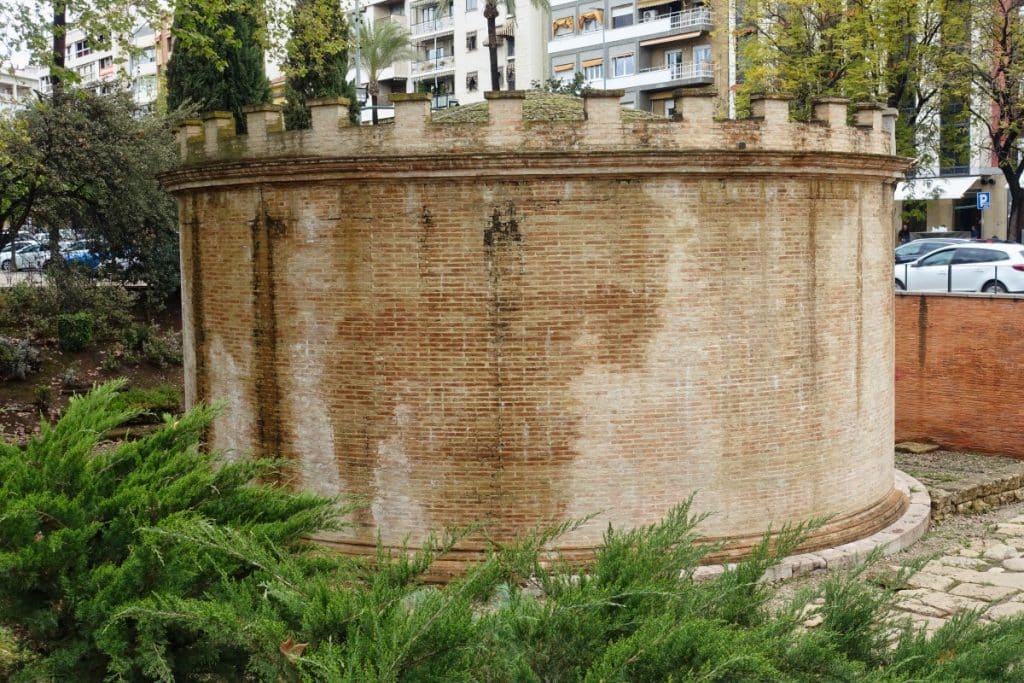
In 1993, the remains of a Roman mausoleum from the 1st century AD were discovered there. It is located outside the city walls of the time and was used by the Romans for the cult of the dead.
Templo Romano in the old town of Córdoba
Another “Roman” site in Córdoba is located in the old town next to the current town hall.
Imposing columns rise into the sky in the middle of the city and show the remains of a Roman temple. This dates from the 1st century and the excavations show a complex measuring 32 x 16 metres. The columns are made of marble and some have beautiful filigree work.
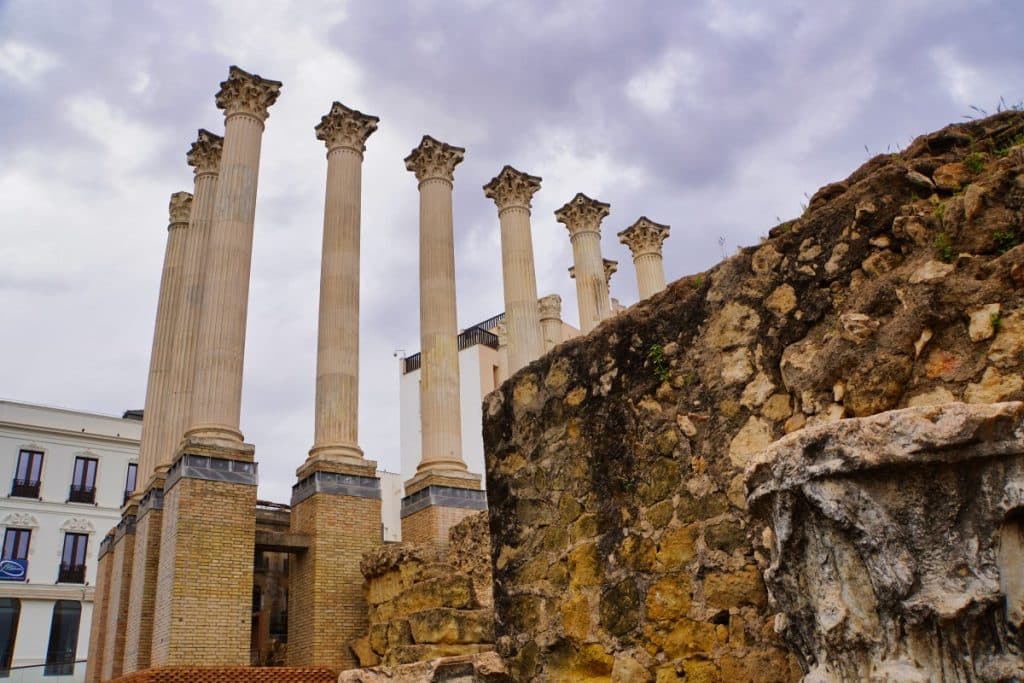
Unfortunately, the visitor centre was closed when we were in town. I would have liked to know more about it.
Plaza de la Corredera (Corredera-Platz)
It was raining cats and dogs when we reached the impressive Plaza de la Corredera. The square, which is one of the largest squares in Andalusia, is 113 metres long and 55 metres wide.
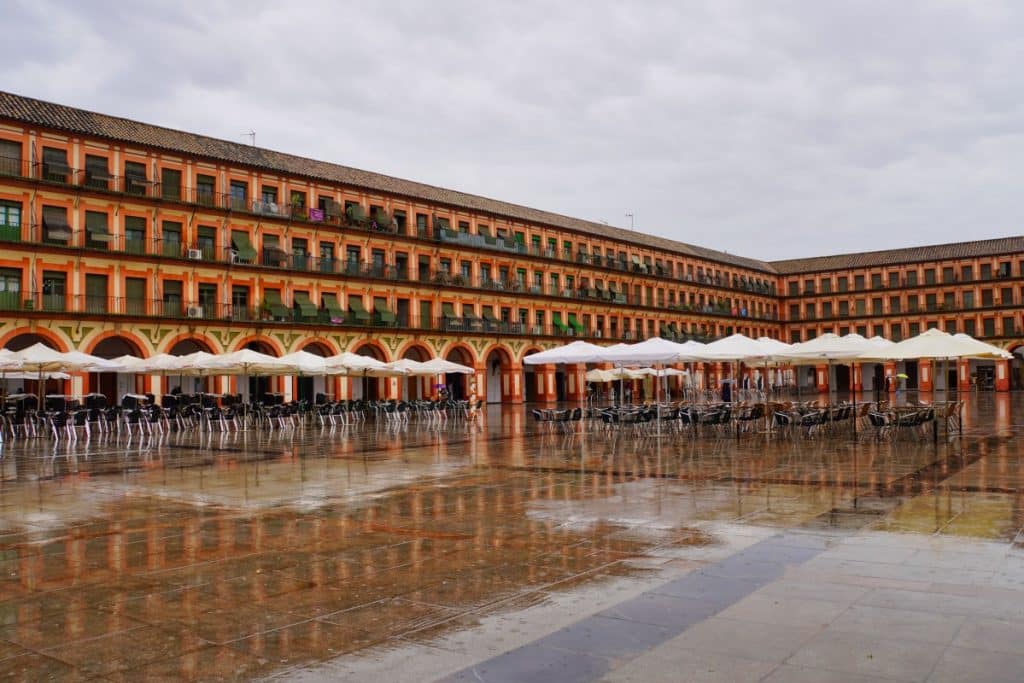
The square, as it exists today, was laid out according to plan in the 17th century. There are beautiful arcaded houses on 3 ½ sides. Only the south side of the square was not included in the square design. At the time of its construction, there were already two houses there, namely the Old Town Hall and the Casa de Dona Jacinta.
You can enter the square via five entrances. I found it very interesting that the square used to be used for bullfights. There is a narrower entrance through which the bulls were driven.
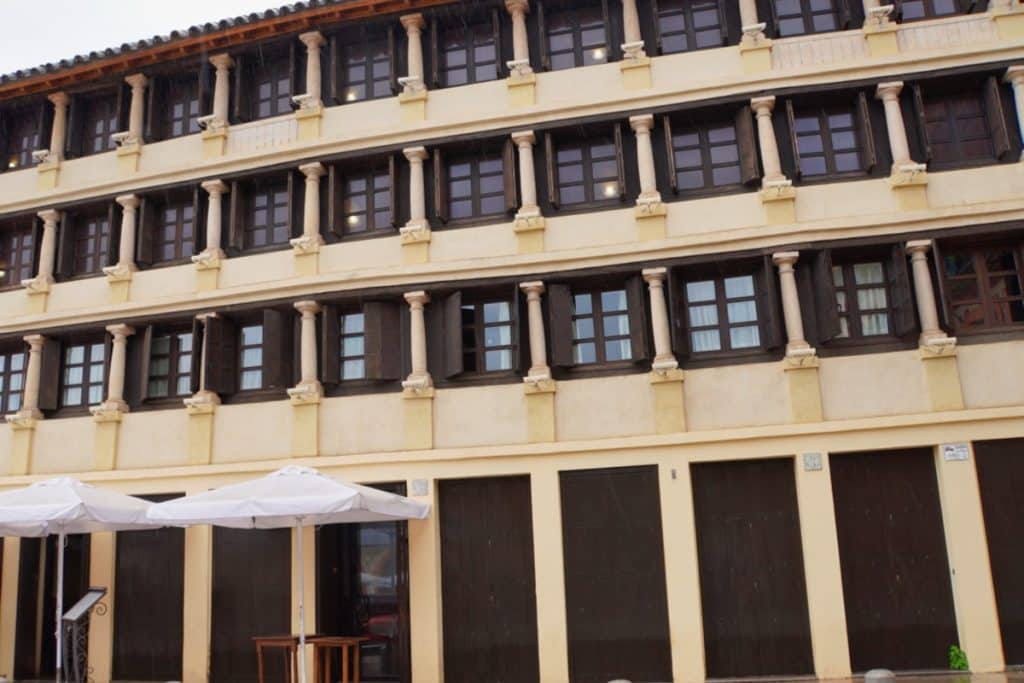
Due to the persistent rain, I was very happy about the archways, which almost made it possible to walk around without any problems. There are a few bars and restaurants here.
Torre de la Malmuerta on the edge of the old town of Córdoba
The city fortifications around the old town of Córdoba can be found in many places in the cityscape. On the northern edge of the city centre stands the Torre de la Malmuerta, which dates back to the Middle Ages.
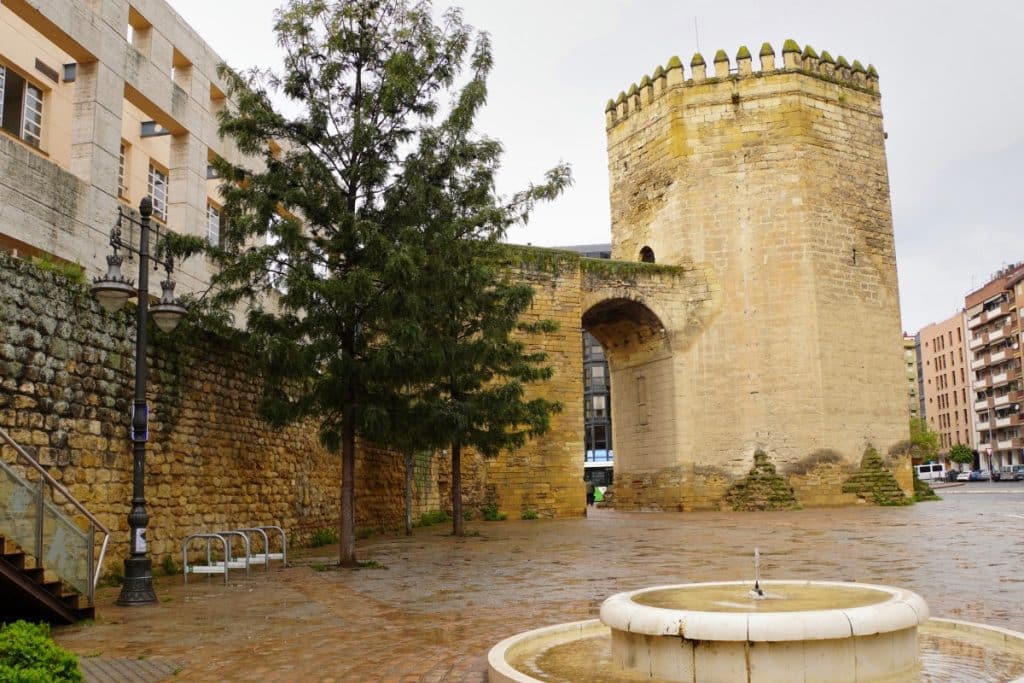
The tower has an octagonal ground plan and an arch that leads over the footpath.
The tower owes its name to a legend. Torre de la Malmuerta means tower of the badly dead. The legend says that a knight caught his wife with another man and killed him in a raging fury. Because of his status, however, they did not want to execute him for his deed and decided that he had to build this tower. This was to be his prison for the rest of his life.
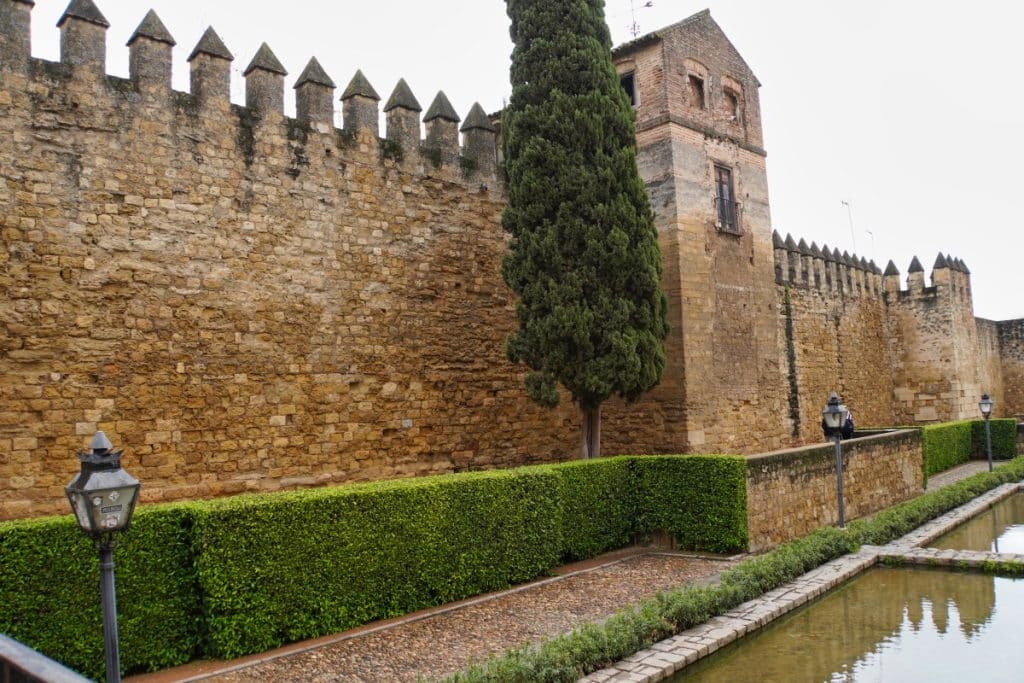
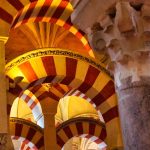
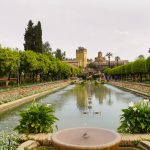
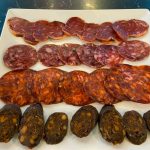
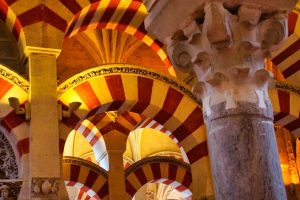
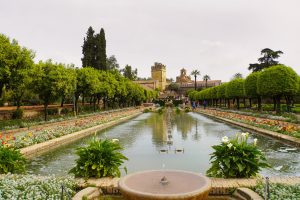
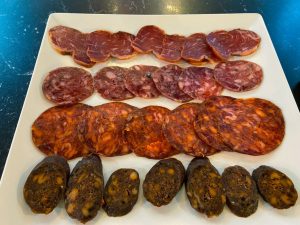
Leave a Reply